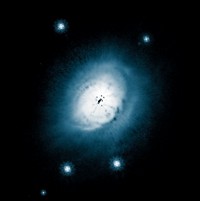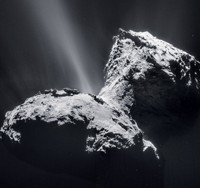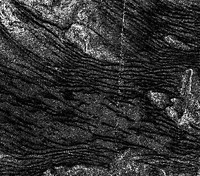Advertisement
Grab your lab coat. Let's get started
Welcome!
Welcome!
Create an account below to get 6 C&EN articles per month, receive newsletters and more - all free.
It seems this is your first time logging in online. Please enter the following information to continue.
As an ACS member you automatically get access to this site. All we need is few more details to create your reading experience.
Not you? Sign in with a different account.
Not you? Sign in with a different account.
ERROR 1
ERROR 1
ERROR 2
ERROR 2
ERROR 2
ERROR 2
ERROR 2
Password and Confirm password must match.
If you have an ACS member number, please enter it here so we can link this account to your membership. (optional)
ERROR 2
ACS values your privacy. By submitting your information, you are gaining access to C&EN and subscribing to our weekly newsletter. We use the information you provide to make your reading experience better, and we will never sell your data to third party members.
Astrochemistry
Possibility of sugars past Pluto
New research suggests that sugars may coat the surface of Arrokoth, a space rock orbiting at the outer edge of our solar system
by Fionna Samuels
June 7, 2024

In 2019, at 6.4 billion km from home, NASA’s New Horizons spacecraft snapped photos and collected spectra as it whizzed past a funky red space rock in the Kuiper Belt. That rock became the most distant object in our solar system ever explored by a spacecraft in a flyby. It was later named Arrokoth, which means “sky” in “Powhatan/Algonquian. Now an international team of earthbound researchers has revealed that Arrokoth’s surface may be rich in sugars formed abiotically from irradiated methanol ices (Proc. Natl. Acad. Sci. U.S.A. 2024, DOI: 10.1073/pnas.2320215121).
The color of Arrokoth’s icy surface is a key clue that it’s host to interesting chemistry. Frozen methanol has no color, says chemist Ralf Kaiser, lead investigator of the work. But after frozen methanol is exposed to ionizing radiation, it can take on a rainbow of hues. Kaiser simulated this evolution in his laboratory at the University of Hawaii at Manoa. To mimic the ices on Arrokoth, his team condensed and froze 13C-labeled methanol onto small metal sample plates, then irradiated the ice using relatively low-energy electrons as a proxy for galactic cosmic rays, stopping when the ice turned Arrokoth-red. Everything was done under vacuum at 40 K (–230 °C), Kaiser says, ensuring that the samples remained free of contaminants and the environmental conditions mirrored those in the Kuiper Belt.
To determine the specific chemical composition of these reddened methanol ices, Kaiser carefully packed the samples in specialized, argon-filled containers and shipped them half a world away to instrumentalist Conny Meinert, a research director at Côte d’Azur University, in France. The team found an abundance of different sugars residues contained within the ice, she says. A handful—including ribose, glucose, and glycerol—have well-established analytical standards, making them easy to identify, Meinert says, while the rest are unidentifiable isomers.
“We see a lot of sugars, but sugars alone cannot explain the red color,” Meinert says. The team also found evidence of large, conjugated molecules that likely formed from continuing reactions within the irradiated ice. These chromophores give the lab ices their red tinge.
Although these organic molecules are responsible for the red color of the methanol ices created in Kaiser’s lab, planetary scientist Eric Quirico from the Grenoble Alpes University is not convinced that the same large, conjugated species are also present on Arrokoth’s surface. He is skeptical that low-energy electrons are a good proxy for galactic cosmic rays, which are largely made up of ions. Irradiation with ions may cause polymers—especially those with aromatic rings—to undergo different chemical reactions than the ones induced by irradiation by electrons, he writes in an email. Even so, Quirico thinks detecting sugars in the lab samples is novel and interesting.
Although the possibility of biologically relevant sugars on Arrokoth and other distant space rocks is exciting, New Horizons co–principal investigator Will Grundy cautions against speculating too heavily about those sugars’ playing a role in seeding life on Earth. He thinks this research highlights that wherever energy meets carbon, oxygen, and hydrogen, there will be sugar. Arrokoth is not unique in this sense. “I think the universe makes the molecules of life more easily than we appreciate,” he says..





Join the conversation
Contact the reporter
Submit a Letter to the Editor for publication
Engage with us on Twitter